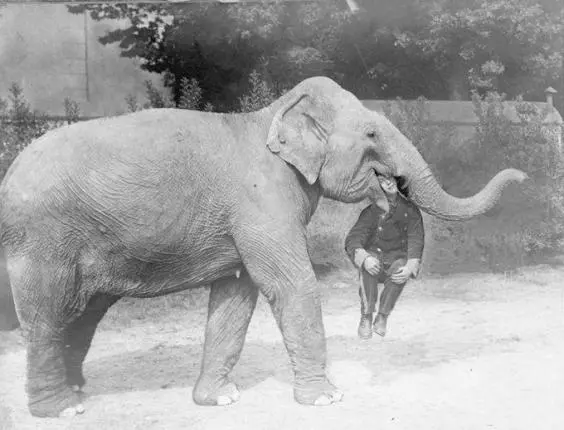It’s a marvel: such sophisticated physics in the service of junk food. I ask van Vliet which crispy-crunchy snack foods he has helped design. He wears a look that conveys both amusement and something dimmer. “Oh, the food companies are not using this science. They just make a product, give it to somebody, and say, ‘How do you like it?’”
René confirms this. “They are so low-tech. They have no clue.” It takes five to ten years for the discoveries of food physics to find their way into industry.
What is the point, then? For van Vliet anyway, the point is physics. Earlier, when I’d complained that the food-texture journals were “just a lot of physics,” van Vliet seemed taken aback. “But physics is so nice!” It was as though I’d insulted a friend of his.
René cranes his neck toward the steam tables. “Can you stay for lunch, Ton?” It’s 12:30 and all we’ve had are cassava chips. With his tongue, René works some free from a molar. [55] Technical term: toothpack.
Van Vliet considers this. “Well, I would have to tell my wife. You see I’m a good Dutch man, I go home for lunch every day! On my bicycle.” In his eight years at Wageningen University, he adds, he has never tried the food in Restaurant of the Future. We are unable to tell if this is a yes or a no. René asks him whether he has a cell phone, to call his wife.
“Yes, we have one at home.”
We let it drop. Later, walking to the parking lot, we glimpse van Vliet on a campus bike path, pedaling into the slanting snow.
8. Big Gulp
HOW TO SURVIVE BEING SWALLOWED ALIVE


IN THE COLOR plate that illustrates the Jonah story in my mother’s Bible, the fisherman is halfway in the mouth of an indeterminate species of baleen whale. He wears a sleeveless red robe, and his hair, just starting to recede around the temples, is slicked back with seawater. One arm is outstretched in an effort to swim free. Baleen whales are strainer feeders. They close their mouth on a large gulp of ocean and use their tongue to push it forward through the vast comb of baleen, expelling the seawater and retaining small fish, krill, anything solid. It is a gentle, perhaps even survivable, way to be eaten. The prey is rarely much larger than a man’s foot, however, and the whales are built accordingly.
“Baleen whales have very small gullets,” says Phillip Clapham, a whale biologist with the National Oceanic and Atmospheric Administration. “They could not possibly swallow a hapless victim of God’s wrath.” But a sperm whale could. Its gullet is wide enough, and though it has teeth, it doesn’t, as a matter of course, chew its food. Sperm whales feed by suction. Evidently quite powerful suction: in 1955, a 405-pound giant squid—six foot six minus the tentacles—was recovered intact from the stomach of a sperm whale caught off the Azores.
And then there is James Bartley. On November 22, 1896, the New York Times picked up the story of a sailor on the whaling ship Star of the East who disappeared in the waters off the Falkland Islands after a harpooned sperm whale, “apparently in its death agonies,” capsized his whaleboat. Assuming Bartley had drowned, the rest of the crew set to work flensing the whale, which had by then finished up its agonies. “The workmen were startled… to discover something doubled up in [the stomach] that gave spasmodic signs of life. The vast pouch was hoisted to the deck and cut open and inside was found the missing sailor,… unconscious” but alive—after thirty-six hours inside the whale. [56] 1896 was a banner year for human-swallowing, or yellow journalism. Two weeks after the Bartley story broke, the Times ran a follow-up item about a sailor buried at sea. An axe and a grindstone, among other things, were placed in the body bag to sink the parcel. The man’s son, frantic with grief, plunged overboard. The next day, the crew hauled aboard a huge shark with an odd sound issuing from within. Inside the stomach, they found both the father and the son alive, one turning the grindstone while the other sharpened the axe, “preparatory to cutting their way out.” The father, the story explains, “had only been in a trance.” As had, apparently, the Times editorial staff.
Bible literalists seized upon the Bartley story. For decades, it turned up in religious tracts and fundamentalist sermons. In 1990, professor and historian Edward B. Davis, then at Messiah College in Grantham, Pennsylvania, did some fact-checking. His paper runs to nineteen pages and encompasses research that took him from the newspaper archives of the British Library to the history room of the Great Yarmouth public library. Short version: The Star of the East was not a whaler, and there was no whaling going on in the Falklands at that time. No one named James Bartley had been on the ship, and the captain’s wife was certain no crew had ever been lost overboard.
Placing history aside, let’s look at the digestive realities of the Bartley situation. If survival in the stomach were a simple matter of the size of the accommodations, any one of us could manage just fine. The forestomach of a killer whale, a far smaller creature, has been measured, unstretched, at five feet by seven feet—about as big as a room in a Tokyo capsule hotel, with a similar dearth of amenities. Figure 154 of Whales , by esteemed whale biologist E. J. Slijper, is a scale drawing of a twenty-four-foot killer whale and the fourteen seals and thirteen porpoises recovered from its stomach. The prey are drawn in a vertical lineup beneath the whale’s belly, like whimsically shaped bombs dropping from a plane.
While a seaman might survive the suction and swallow, his arrival in a sperm whale’s stomach would seem to present a new set of problems. [57] I challenge you to find a more innocuous sentence containing the words sperm, suction, swallow, and any homophone of seaman . And then call me up on the homophone and read it to me.
“Bartley’s skin, where it was exposed to the action of the gastric juices, underwent a striking change. His face and hands were bleached to a deadly whiteness and the skin was wrinkled, giving the man the appearance of having been parboiled.” Hideous. And, it turns out, bogus. The whale’s forestomach secretes no digestive fluids. Hydrochloric acid and digestive enzymes are secreted only in the second, or main, stomach, and the passage between first and second is too small to admit a human.
While the absence of acid in the sperm whale forestomach shoots another hole in the Bartley tale, it lends some credence to the Jonah parable. Let’s say the whale swallowed some air as it surfaced in pursuit of Jonah. Or let’s fast-forward a few centuries and give him a scuba tank of oxygen. Might the whale stomach under these circumstances be a survivable environment?
It might, if not for this: “Whales ‘chew’ their food with their stomachs,” writes Slijper. Since sperm whales swallow prey whole, they need some other way to reduce it to smaller, more easily digestible pieces. The muscular wall of the forestomach measures up to three inches thick in some species. Slijper compares the cetacean forestomach to the gizzard in birds—an anatomical meat grinder that stands in for molars.
Would a man in a whale forestomach be crushed or merely tumbled? Is the force lethal or just uncomfortable? No one to my knowledge has measured the contraction strength of the sperm whale forestomach, but someone has measured gizzard squeeze. The work was done in the 1600s, to settle an argument between a pair of Italian experimenters, Giovanni Borelli and Antonio Vallisneri, over the main mechanism of digestion. Borelli claimed it was purely mechanical: that birds’ gizzards exerted a thousand pounds of force, and with that kind of grinding going on there was no call for chemical dissolution. “Vallisneri, on the contrary,” wrote author Stephen Paget in a 1906 chronicle of early animal experimentation, “having had occasion to open the stomach of an ostrich, had found there a fluid [58] Vallisneri named the fluid aqua fortis —not to be confused with aquavit , a Scandinavian liquor with, sayeth the Internet, “a long and illustrious history as the first choice for… special occasions,” like holidays or the opening of an ostrich stomach.
which seemed to act on bodies immersed in it.”
Читать дальше














